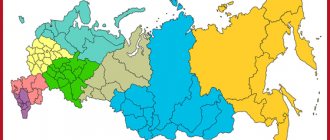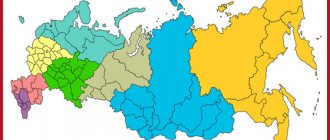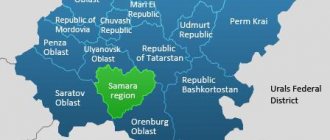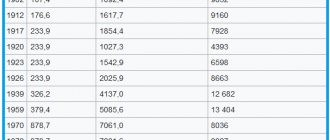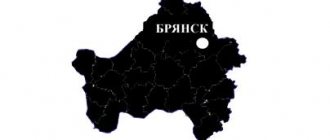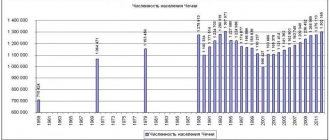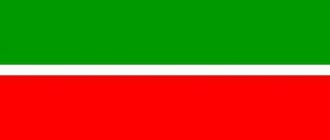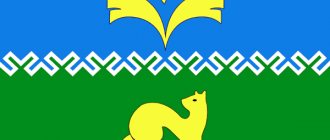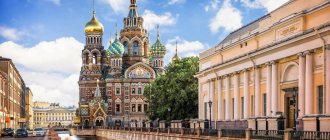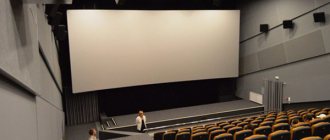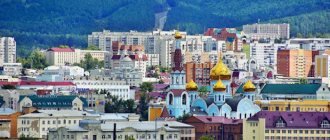Hello, dear colleague! To effectively participate in tenders (government procurement), it is necessary to narrow the search for information about ongoing tenders to a specific region or region.
Why do you need to do this? Firstly , the unified information system (www.zakupki.gov.ru) provides information on ongoing tenders in all constituent entities of the Russian Federation and tracking the emergence of new data in all regions is a labor-intensive and useless task; secondly , you need to take into account your capabilities (the company’s capabilities) to fulfill contractual obligations in the event of your victory. Suppose your company is located in Moscow, and the Customer is in the Sakhalin region, you yourself understand that these are additional costs for transportation, travel expenses, etc. Thirdly , the Customers themselves are quite skeptical about procurement participants (suppliers) from other regions and are doing everything possible to ensure that the contract goes to “their own”. Therefore, you need to clearly define for yourself where you will participate and not waste your time and energy on processing all the other information.
Below I have provided data on the federal districts and their constituent entities of the Russian Federation. I hope this information will be useful to you, because... this is the main navigation tool for searching information in the Unified Information System (UIS).
Notes:
- List of federal districts (approved by Decree of the President of the Russian Federation of May 13, 2000 N 849) // Rossiyskaya Gazeta, 05/14/2000.
- Decree of the President of the Russian Federation dated June 21, 2000 N 1149 “Issues of ensuring the activities of the offices of plenipotentiary representatives of the President of the Russian Federation in federal districts.”
- Decree of the President of the Russian Federation dated January 19, 2010 “On introducing amendments to the list of federal districts approved by Decree of the President of the Russian Federation dated May 13, 2000 N 849, and to Decree of the President of the Russian Federation dated May 12, 2008 N 724 “Issues of the system and structure of federal executive authorities"" // Official Internet portal of legal information of the Russian Federation, 01/19/2010.
- The Crimean Federal District was formed on March 21, 2014 after the annexation of Crimea to Russia. It included the Republic of Crimea and the federal city of Sevastopol: Decree of the President of the Russian Federation “On the formation of the Crimean Federal District” No. 168 // Official website of the President of the Russian Federation, 03.21.2014; The Territories of the Russian Federation 2015. L., NY, 2015. P. 308-320.
- The Decree on the Southern Federal District was signed // Official website of the President of the Russian Federation, 07.28.2016; I. Preobrazhensky. Comment: Why did Putin leak Crimea? // DW, 01.08.2016.
- Kyiv was outraged by the inclusion of Crimea in the Southern Federal District // Lenta.ru, 07.28.2016.
- Ukraine: Russia blocked the statement on Crimea in the UN Security Council // DW, 07.29.2016; Russia blocked the Ukrainian project for the sake of UN Security for the sake of Crime // UKR Mission to UN, twitter.com.
- Dzhemilev on the need for sanctions for the entire Southern Federal District // YouTube, 07.28.2016; Official page of the Plenipotentiary Representative of the President of Ukraine for the rights of the Crimean Tatar people Mustafa Dzhemilev on Facebook, 08/01/2016.
- Territory area of the Russian Federation by constituent entities of the Russian Federation as of January 1, 2015 // Federal State Statistics Service. Moscow, 2015. P. 5.
- Population estimate as of January 1, 2021 // Federal State Statistics Service, 01/01/2016.
- Republic of Crimea // Official website of the Federation Council of the Russian Federation; 26,081 sq. km – according to the Information and Referral Service of Ukraine: Territory of Ukraine // Information and research site “Ukraine”.
- Sevastopol // Official website of the Federation Council of the Russian Federation; 864 sq. km – according to the Information and Referral Service of Ukraine: Territory of Ukraine // Information and research site “Ukraine”.
- Population estimate as of January 1, 2021 // Federal State Statistics Service, 01/01/2016.
- Population estimate as of January 1, 2021 // Federal State Statistics Service, 01/01/2016.
- Astrakhan region. Estimation of the resident population as of January 1, 2015 // Federal State Statistics Service, 01/01/2015.
- Volgograd region. Estimation of the resident population as of January 1, 2021 // Federal State Statistics Service, 01/01/2016.
- Krasnodar region. Estimation of the resident population as of January 1, 2021 // Federal State Statistics Service, 01/01/2016.
- Rostov region. Estimation of the resident population as of January 1, 2021 // Federal State Statistics Service, 01/01/2016.
- Population of the Russian Federation by municipalities as of January 1, 2021 // Federal State Statistics Service, 01/01/2016.
- Kalmykia. Estimation of the resident population as of January 1, 2016 // Federal State Statistics Service, 01/01/2016.
- Number of permanent population in municipalities of the Republic of Crimea as of 01/01/2016 // Federal State Statistics Service, 01/01/2016.
- Population estimate as of January 1, 2021 // Federal State Statistics Service, 01/01/2016.
- Ustinov Viktor Vladimirovich. Biography // Southern Federal District. Plenipotentiary Representative of the President of the Russian Federation in the Southern Federal District.
Alternative routes for day 3
Volgograd in 3 days - a trip of this duration will allow you to visit places that are not the most obvious among tourists. You can choose leisure activities to suit every taste - walk through city museums, go to a remote military memorial complex, or go out into nature for the whole day.
Museums
In addition to the institutions mentioned above that are part of the Battle of Stalingrad Museum-Reserve (Mamaev Kurgan, Panorama Museum, Memorial Historical Museum, Memory), in Volgograd you can visit museums with other themes.
You can learn about the history and nature of the region at the Volgograd Museum of Local Lore . Its structure also includes:
- Museum of Musical Instruments E. N. Pushkin , created from the donated collection of instruments (242 pieces) by E. N. Pushkin. Now among more than 300 exhibits you can see stringed, pneumatic and other musical instruments; during the tour, visitors will hear the sound of some of the exhibits.
- Museum-apartment of M.K. Lukonin , a poet who lived in Stalingrad in his youth. The poet's personal belongings are collected here.
Art lovers should go to the I. I. Mashkov Museum of Fine Arts , where more than 9,000 exhibits are collected. The halls display Russian art of the 18th–21st centuries. (Bryullov, Tropinin, Shishkin, Polenov, Aivazovsky, Kuindzhi, Serov, Roerich, Goncharova), the work of Volgograd masters is highlighted separately. The collection of foreign art contains casts of ancient sculpture, oriental porcelain and woodcuts, paintings of the 17th-20th centuries, and there is a collection of works from the sister cities of Volgograd.
Museum of Russian Fairy Tales Photo: © Vera Polonskaya
An unusual collection is collected in the Museum of Weights and Measures at the weighing equipment plant. The exhibits date back to the 16th–20th centuries and tell the history of scales and the traditions of weight construction. The entertaining collection is popular with tourists with children. At a distance from the center there is the Museum of Russian Fairy Tales (Kirovets village) with thematic decorations, performances and games. The road from Volgograd to the Museum of Don Architecture and Life in the village of Ilovlya will take about an hour. In a picturesque place near the river you can walk around the territory with a traditional Cossack estate. Visitors will learn about Cossack culture, folklore and cuisine.
Those interested in space topics will enjoy the Volgograd Planetarium . The building itself in the late Stalin Empire style has an interesting history - it was erected on the initiative of the workers of the German Democratic Republic for the 70th anniversary of Stalin. The interior is decorated with expensive materials. The planetarium apparatus, assembled in Jena, is still in operation. From the porch of the building there is a panoramic view of Mira Street , which was the first to be built after the war in an almost completely destroyed city.
More details: museums of Volgograd
Volgograd Planetarium Photo: © Sergey Makhinin
War memorials
About 25 km from the city there is a memorial complex "Rossoshki" . This is a military cemetery where German, Soviet and Romanian soldiers are buried. During the Great Patriotic War there was a German cemetery here; other burials appeared after the opening of the memorial complex in the 1990s. Nearby there is a memorial sign on the site where there was a concentration camp for Soviet prisoners of war.
Soldier's Field will take about 15–20 minutes . This is another memorial complex where battles took place in the Battle of Stalingrad. After the war, the field was cleared and many shells were found. Now there is a mass grave here, monuments have been erected, and parts of the plows that were used to plow the cleared field have been preserved.
Memorial complex "Rossoshki" Photo: © Stanislav Kaznov
Natural parks
Natural parks in the vicinity of Volgograd are suitable for a relaxing holiday. Not far from the city there is the Donskoy Natural Park with chalk mountains and meadows. Several natural areas are located at a considerable distance (from 200 km), so you can go here for several days. "Shcherbakovsky" natural park is famous for the Stolbichi rocks and the picturesque landscapes of Volga Switzerland. The Tsimlyansk Sands Nature Park features a sandy landscape, rare species of animals and a herd of mustangs. In Nizhnekhoperskoye you can see the Shakinsky oak grove, the ancient Wild Field, Babinskoye Lake with floating islands, a sandy massif, and the Cossack village where M. Sholokhov lived.
160 km from Volgograd is the Shukshinsky cliff in the chalk mountains. Scenes of the film based on Sholokhov’s novel “They Fought for the Motherland” were filmed in this picturesque place. The writer, director and actor V. Shukshin died in a nearby village when filming was wrapping up. He loved to spend time on this cliff; a monument was erected here in memory of Shukshin.
Natural Park "Donskoy":
Monasteries
"Ust-Medveditsky" natural park is located on several rivers, the Don Cossacks lived here, and the Spaso-Preobrazhensky Monastery . Pilgrims strive to see the local shrine - a stone with the imprints of Abbess Arsenia (some say these are the footprints of the Virgin Mary). It will be interesting to look at the temple with 33 domes, built here in 2014.
The Kamenno-Brodsky Belogorsky Holy Trinity Monastery is famous for its surrounding nature - perennial oak trees, chalk mountains with ancient caves, healing springs.
From Volgograd it will take about 2.5 hours to get to the Akhtyrsky convent with a holy well. There is an opinion that Petrov-Vodkin painted his famous painting “The Bathing of the Red Horse” here, or rather its first version. It will take a little less time to get to the Kremensky Ascension Monastery , restored on the site of the monastery of 1693.
Review materials: Guide to Volgograd
Sights of Volgograd
Church of the Transfiguration in the Ust-Medveditsky Spaso-Preobrazhensky Monastery Photo: © Victor Martyanov
Where to stay in Volgograd
If you want to get acquainted with the sights of the city, monuments of military history and museums telling about them, you should consider housing options in the vicinity of the beginning of Lenin Street. It is there that the Battle of Stalingrad Museum, the Central Staircase to the 62nd Army Embankment and the ruins of the Gerhardt Mill are located. There are several hotels here, the rest are located higher up, behind the railway line. There are more offers for apartments, almost all of which, thanks to good competition, maintain a decent level of hospitality and service.
When deciding to explore housing in other areas, keep in mind that Volgograd is one of the longest cities in Russia. Pay close attention to the location and transport accessibility. An interesting option for the summer are park hotels and bases on the Krasnoslobodsk side near the spacious sandy beaches on the Volga. The famous Dancing Bridge leads there, and it’s very close to interesting places.
- Volgograd Hotels
- Hostels for Budget Travelers
- Flats and apartments
When choosing accommodation on Booking.com, do not forget about the opportunity to get cashback: Cashback promotion for Tourist. RU
Arch of the first lock of the Volga-Don Shipping Canal Photo: © Alexander Smirnov
Geography and population
The Southern Federal District covers the territory of the south of the European part of Russia from the Black and Azov Seas in the west to the Caspian Sea in the east. Along the waters of the Black and Azov Seas, as well as overland in the west and north-west, the Southern Federal District borders on the territory of Ukraine. To the north are the territories of the Central and Volga Federal Districts, and in the northeast is the border with Kazakhstan. In the south, the Southern Federal District borders with Abkhazia and the North Caucasus Federal District.
Total area of the Southern Federal District : 447,821 square kilometers.
Total population of the Southern Federal District : 14,044,580 people. (2016)
| Subject of the federation | Area (sq. km) | Population (persons) | Administrative center |
| Republic of Adygea | 7792 | 451 480 | Maykop |
| Astrakhan region | 49 024 | 1 018 626 | Astrakhan |
| Volgograd region | 112 877 | 2 545 937 | Volgograd |
| Republic of Kalmykia | 74 731 | 278 733 | Elista |
| Krasnodar region | 75 485 | 5 513 804 | Krasnodar |
| Republic of Crimea | 26,100 | 1 907 106 | Simferopol |
| Rostov region | 100 967 | 4 236 000 | Rostov-on-Don |
| Federal city Sevastopol | 1080 (864 – land; 216 – sea area) | 416 263 | Sevastopol |
Population density : 33.3 people per square kilometer (2016).
Urban population: 62,9% (2016) .
First day
It’s convenient to start exploring the historical center of Volgograd at Station Square, where the railway station is located. In front of it you will see the Barmaley fountain , made in 2013 in the image of a pre-war fountain. The composition with a round dance of children against the backdrop of destruction caused by air strikes appeared in a photograph from 1942 and made an indelible impression of the contrast of smiling children and the ruins of the city.
From the square, walk to several architectural monuments of pre-revolutionary times. On the street Gogol there is a red-brick mansion of the Repnikovs , which houses the Volgograd Memorial and Historical Museum with an exhibition about the Civil War. If you walk along Kommunisticheskaya Street, you will see the Tsaritsyn fire brigade building , restored according to the original of the 19th century.
Fire tower Photo: © Igor Butyrskii
Next, go to the Square of Fallen Fighters, past the monument to Alexander Nevsky and the New Experimental Theater in a building from the early 20th century. The Alexander Nevsky Cathedral , which was located on the Square of Fallen Fighters until it was blown up in the 1930s, is being rebuilt in the Alexander Garden It is worth walking along Volgodonskaya Street with several merchant houses of the late 19th century.
On the Square of Fallen Fighters you will see an obelisk to the defenders of Red Tsaritsyn near the grave of the Red Guards. Many people were also buried in the mass grave during the Great Patriotic War, and the Eternal Flame was lit in their memory. Not far from the grave of the Three Heroes there is a poplar tree that survived military battles. The green area with memorials is surrounded by post-war buildings. Don't be put off by Stalin's neoclassicism, in the style of which many buildings in the restored Stalingrad were built. The monumentality was intended to reflect the heroic and difficult times of the war. The central department store on the square was restored after the war and houses the Memory Museum . The exhibitions tell about the headquarters of the German commander F. Paulus located in the basement and his capture.
Details: Square of Fallen Fighters
In the Memory Museum Photo: © grau59
Along the Alley of Heroes you go to the central embankment named after the 62nd Army . First you will see the Art Fountain from 1957. Nearby there are two propylaea - structures with 8 columns, from which the central staircase . It connects the upper and lower tiers of the embankment. Steam shipping on the Volga actively developed at the beginning of the 19th century; many merchant ships stopped at the Tsaritsyn port, but the improvement of the area near the water began only at the beginning of the 20th century. Then a landslide practically destroyed the embankment, and the area along the river was redecorated again in the 1930s. After the war, restoration work began, which was completed by 1952. The staircase was built on the site of a military crossing; now during the holidays it is used as an amphitheater. There are various monuments on the embankment; pay attention to the Church of John the Baptist (2001), built on the site of the first stone church of Tsaritsyn.
In detail: embankment of the 62nd Army
Central staircase Photo: © Vasilina Babkovskaya
On the embankment there is the “Rodimtsev Wall” - a memorable place where Major General Rodimtsev’s division landed, which came to help in the battles for Stalingrad. Above it is the “Battle of Stalingrad” panorama museum with a large-scale painting about the defeat of the enemy at Stalingrad. In addition to the panorama, the museum’s halls display items related to the Battle of Stalingrad - personal belongings of the battle participants, photographs, weapons. Next to the futuristic museum building, the Gerhardt mill . This building was significantly damaged during the fighting, and its appearance continues to remind us of the destructive power of war. In front of the mill there is a second fountain, “Barmaley”, which against its background looks almost like a photo from the war years. It’s also worth going to Pavlov’s house , where our soldiers held the defense. The house was rebuilt after the battles, and a memorial wall was installed on it.
Details: Panorama Museum “Battle of Stalingrad”
Gerhardt's Mill Photo: © Maksim Starostin
What to see in Volgograd in 3 days? One of the “Seven Wonders of Russia” is Mamayev Kurgan . This is the main city attraction, consisting of a complex of objects “Heroes of the Battle of Stalingrad”. During the war, the height of the mound was called “Height 102.” Capturing and holding this height was of strategic importance for each side; it offered good visibility and shooting opportunities, so numerous heavy battles took place here. However, the feat of the defenders of Stalingrad made a turning point in the war. His memory is immortalized in a large-scale historical and memorial complex. The main object is the sculpture “The Motherland is Calling!” 85 m high. Together with it, the ensemble consists of several squares and sculptures, bas-reliefs, ruin walls, a memorial cemetery, and the Hall of Military Glory with the Eternal Flame.
More details: Mamayev Kurgan
Complex on Mamayev Kurgan Photo: © Vasilina Babkovskaya
You can get to Mamayev Kurgan by metrotram - this is a high-speed Volgograd tram, most of the stations of which are underground. Tourists recommend trips on the metrotram as one of the city's attractions. From Mamayev Kurgan you can go down to the Volgograd Arena stadium , built for the 2021 World Cup. For relaxation, you can stop in the central park of culture and recreation with attractions and a Ferris wheel.
Detailed advice on what to see in Volgograd in 1 day
Volgograd Arena Stadium Photo: © Sergey Makhinin
